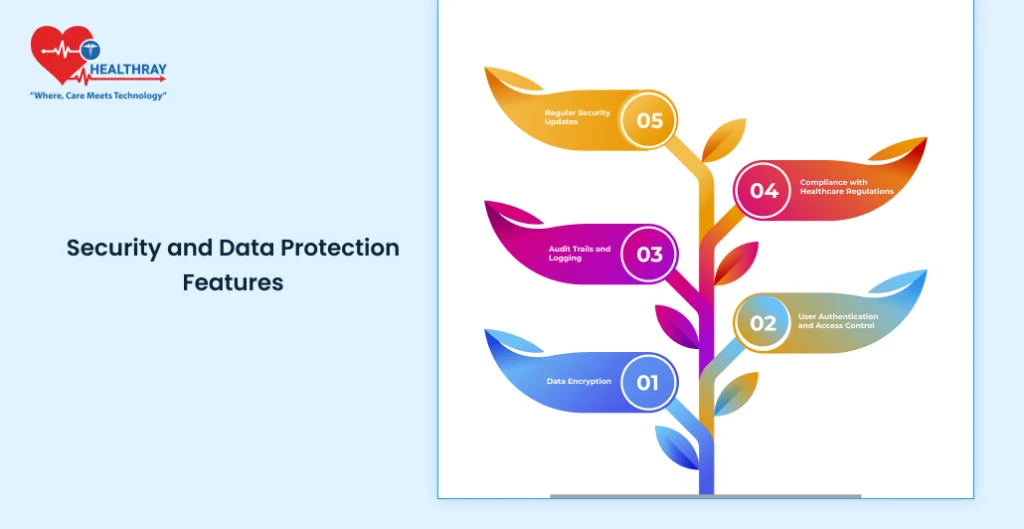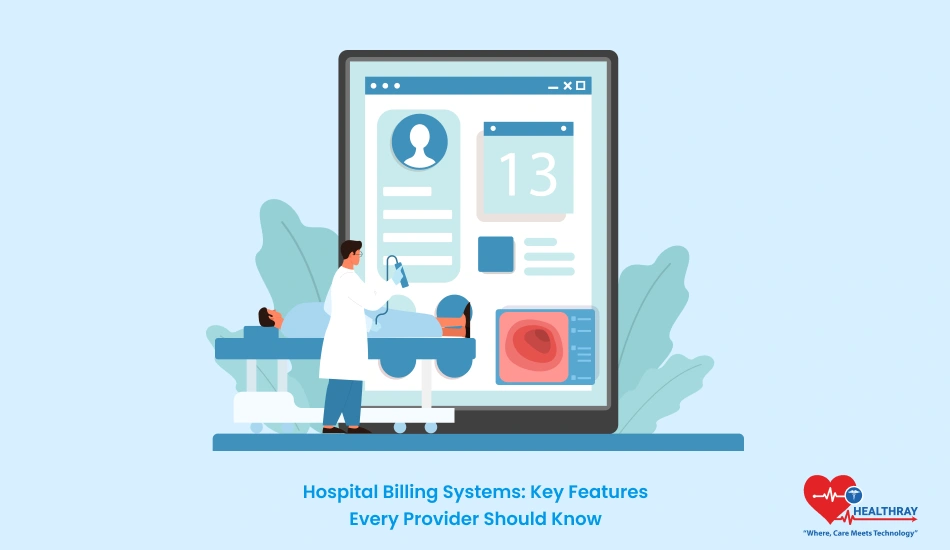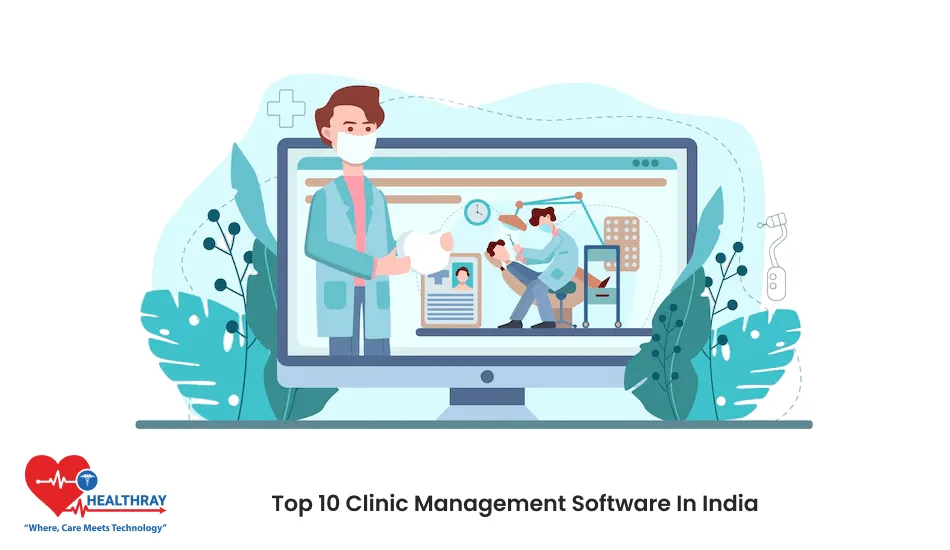Introduction
Hospital billing can be such a complex feat, as it weighs accuracy, compliance, and efficiency. Each omitted billing entry, delayed claim, or data error ripples the financial health of a hospital, goes on to affect cash flow, and even impacts patient satisfaction. For healthcare administrators, billing managers, and IT decision-makers, the difference-maker in mastering these challenges turns out to be the proper billing system within a Hospital Management System.
This guide traces the core features that every Medical Billing Software should have. From patient data management, denial tracking, encryption, compliance-these components are much more than just software tools; they are essential for a smooth, secure, and efficient billing operation. All this will be gleaned at the end of this guide, so you understand what makes a hospital billing system truly effective and how these create support for financial stability and regulatory compliance in healthcare. Always remember the following critical functions because it is the one of steps in medical billing processes.
Core Features of a Hospital Billing System

Claims Management
The heart of any billing system is the proper processing of claims. A great system will assist a claim in its complete life cycle from formation and filing to tracking, correction, and re-filing if required. Within this process of claims management, automation eradicates human errors and saves much time consumed in the manual processing of claims by employees. This besides speedening cash flow also decreases the chances of the rejection of claims and hence revenues are stable.
Denial Management
Denials management tools point out what is denying, so that billing teams can address those root causes before these turn into denials. The system needs to categorize denials, track trend, and propose correct action to be taken. This is essential in knowing where the payment happens most and trying to make billing more accurate while improving claim acceptance. This is critical in reducing lost revenues and optimizing the billing process.
Patient Data Management
Another significant key is the patient database, which aids in accessing billing information and patient medical and insurance details on time. The billing teams can easily pull in the required records of patients for accurate billing purposes and to handle the account of a patient personally. A well-organized database saves the hospitals from billing errors, clear statements of patients, and an overall improvement in the patient experience.
Financial Reporting and Analytics
The financial reports and analytics serve as the source that gives the hospital guidance in the best-informed decisions. A hospital billing system that produces reports on billing trends, source of revenue, payment patterns, and denial rates helps the administrators to identify areas of concern that may need improvement. Analytics also assist long-term planning by healthcare providers to optimize revenue cycles and thus reduce inefficiencies.
Compliance and Regulatory Support
In the healthcare billing process, compliance with regulations, such as HIPAA in the U.S., cannot be compromised. The system should have compliance checks and must be able to protect data strongly so that no leakage of patient data takes place. Legal compliance and expensive fines in case of violation greatly stress the importance of features such as data encryption, audit trails, and access control.
Additional Features for Operational Efficiency
Automated Charge Capture
Charge capture records services rendered to a patient and ensures that they are billed accurately. Automation in this process minimizes missed charges, thereby reducing revenue leakage. With real-time charge capture, billing systems ensure that hospitals avoid financial losses arising from unbilled services and that billing reflects all patient interactions accurately.
Scheduling and Appointment Management
It also features scheduling tools to deal with patient appointments, doctor availability, and room bookings. This would reduce the scheduling conflict and prevent billing errors resultant from missed or changed appointments. Streamlined scheduling improves patient experience through less waiting time and expeditious services.
Mobile Accessibility
Mobile accessibility is the biggest virtue of remote work. They possess billing systems that have been mobile-enabled to allow access to financial data, billing information, and up-to-date changes either from the office or outside.
This flexibility improves productivity and ensures that urgent billing could be managed even off-site.
Integrated Payment Options
An all-inclusive billing system includes standardized payment methods to ensure various modes of payment are available, like direct online payments. The feature allows patients to comfortably make payments and pay their bills in a short time. For the billing manager, it simplifies their administrative work and shortens cash received, thereby improving cash flows.
User-Friendly Interface
The most suitable billing systems are user-friendly; thus, much less training is required for the staff to get accustomed to them. Suitable interface reduces the learning curve of new employees, lower risk of billing errors, and improves overall efficiency. Staff can focus more on care for patients and less on figuring out complex software, with everyday operations being much smoother.
Security and Data Protection Features

Data Encryption
Health care billing systems are one of the key systems that depend heavily on patient data security. Data encryption will protect patient and financial information when they are stored and during the process of transmitting them. Data encryption prevents unauthorized access to confidential information. This way, hospitals can maintain patients’ trust and comply with regulations.
User Authentication and Access Control
The Medical Billing Software shall have a secure billing system with strong access controls such as, multi-factor authentication which prevents unauthorized use of sensitive information. Its multi-tier access control is a feature that allows administrators to acquire the capability to apply custom permission levels while only giving authorized users to view or modify billing records. This high-level security measure will prevent data breaches and also ensure all patient information is protected.
Audit Trails and Logging
Audit trails trace changes occurring within the billing system. The system tracks every login by a user, each modification of data and time accessed. Thus, these audit logs assist hospitals to follow any kind of activity and detect any abnormal or unauthorized activities. This feature helps in compliance with data protection regulations and also assists in investigations in case security incidents occur.
Compliance with Healthcare Regulations
Compliance with HIPAA and CMS is essential for the billing system of a hospital, but built-in compliance features are surely helping in keeping up stringent data handling at par with those legal standards, which would minimize the chance of penalty failures. Periodic updates also keep current the billing system to be kept in tandem with fast-changing regulations, giving confidence to healthcare providers.
Regular Security Updates
The health care billing technology must update itself regularly to combat newly emerging security threats. It continues patching many vulnerabilities and building a strong system against the latest cybersecurity threats. Regular maintenance, as well as improvement of software in hospitals, maintains robust protection for patient data.
Analytics and Reporting Capabilities

Revenue Cycle Analysis
Revenue cycle analysis is an enhanced feature of the billing systems; it gives an overall picture of the financial scenario of the hospital. It identifies trends in revenue, payment cycles, and areas where revenue might be leaking. Patterns so understood will enable healthcare administrators to optimize their billing practices, reduce inefficiencies, and improve cash flows.
Claims Denial Reporting
Denial reports provide an understanding of denial reasons. Monitoring and analyzing trends of denials enables the hospitals to correct processes to avoid the mistakes commonly made, which make the claims denied. This feature would make it possible for the billing manager to identify problems, improve acceptance rates on claims, and ensure that revenue streams are smoother.
Performance Metrics and KPIs
A good billing process would require dashboards and must track a variety of KPIs, including bill turnaround times, claim approval percentages, and the efficiency in raising the collection of amounts. Real-time access to such metrics lets administrators monitor the well-being of the billing process and make appropriate changes in real time. Keeping a check on KPIs will ensure that the billing processes go smooth and work towards long-term financial goals.
Patient Payment Trends
Patient payment trends would reveal information about how and when patients would pay their bills. Such information as it becomes available, administrators can create payment plans or send reminders to increase payments. Such information helps tail the billing communication into accommodating the patient’s preference and therefore increases collections.
Customizable Reporting Options
Custom reporting tools help the hospitals to create reports as per the need of hospitals. Whether it is a departmental breakup of billing, trends over time, or any other specific financial metrics, custom reports will provide actionable insights to assist decision makers to make effective choices. And it again shows how the infinite adaptability nature of hospitals has been displayed when changing financial goals or regulations begin to shift.
Implementation and Support Services
Initial Setup and Customization
Configuration and customization are essential steps for installing a hospital billing system. There will be unique, specific workflow, billing procedure, and regulatory requirements with every hospital. The overall setup is done in such a way that this billing system integrates well within the rest of the work in a hospital and produces minimal interference.
Staff Training and Onboarding
Even the most efficient billing system requires education for employees to process effectively. Comprehensive onboarding gives current and potential employees substantial functionality working know-how from application entry, submissions of claims to security measures. Staffing members feel easy using the system, thus reducing the error level and also efficiency right from the first day at work.
Ongoing Technical Support
There should be reliable technical support in the process of solving complications which may arise once the system starts working. When there is a possibility of accessing a support team, then hospitals will solve technical issues within a short time and also sustain stability in the system without extra costly downtime. Support allows staff to react swiftly to unforeseen problems without hampering billing or patient care.
Regular System Updates
This feature is also necessary since the billing software will, no doubt, require updates whenever healthcare regulations and requirements for billing change. A good vendor will constantly ensure the customer has the system updated to maintain compliance and additional new features or security features. Continued maintenance is vital for keeping the system working at its best, securely, and following current industry standards.
Scalability and Future Growth
The health care sector is one that constantly evolves, and the needs of hospitals within it are no different. A scalable billing system can grow with the organization, including the addition of users, departments, or features as needs may dictate. Scalability will ensure that the system doesn’t become irrelevant while the hospital is growing or due to changes in regulatory requirements.
Conclusion
A fully functional hospital billing system within a Hospital Management System is more than just software; it’s an essential part of health care operations, which impact everything from financial stability to patient satisfaction. Core features in these systems include claims management, denial tracking, compliance tools, and robust security. Extra capabilities like analytics, scheduling, and mobile access make the efficiency of such systems better and help enable informed decision-making.
The right billing system will meet special needs in a hospital and will have proper support during installation in the long run. A full-service billing solution streamlines workflows, enhances revenue cycles, and allows healthcare providers to focus on quality patient care. Understanding key features and benefits can empower administrators and billing managers to make informed decisions that both underpin operational and financial health.





